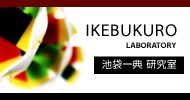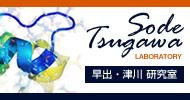Team:Tokyo-NoKoGen/Project/modelling
From 2012.igem.org
(Difference between revisions)
| (7 intermediate revisions not shown) | |||
| Line 3: | Line 3: | ||
<html> | <html> | ||
| - | Modeling | + | <font size="27">Modeling</font> |
<BR> | <BR> | ||
<BR> | <BR> | ||
| - | + | We aimed to build the mathematical model using MATLAB R2012b SymBiology (<A Href="http://www.mathworks.com/">http://www.mathworks.com/</A>). However, since we had no knowledge and no sufficient data, so we could not complete the modeling. | |
<BR> | <BR> | ||
| Line 14: | Line 14: | ||
<BR> | <BR> | ||
| - | <img src="https://static.igem.org/mediawiki/2012/2/22/Modelling-nokogen2012.png" hight=" | + | <div align="center"><img src="https://static.igem.org/mediawiki/2012/2/22/Modelling-nokogen2012.png" hight="70%" width="70%"/></div> |
| + | <BR> | ||
| + | <BR> | ||
Primary reaction equations are bellow: | Primary reaction equations are bellow: | ||
<BR> | <BR> | ||
| Line 32: | Line 34: | ||
<BR> | <BR> | ||
| - | ( | + | (c) RCOOH + ATP + luxE-luxC -> PPi + AMP + luxE-luxC-RCO |
<BR> | <BR> | ||
<BR> | <BR> | ||
| - | ( | + | (d) luxE-luxC-RCO + NADPH -> RCHO + luxE-luxC + NADP+ |
<BR> | <BR> | ||
LuxE and luxC involve in the decanal recycling. The recycling pathway makes luminous bacteria possible to emit light without substrate from outside. | LuxE and luxC involve in the decanal recycling. The recycling pathway makes luminous bacteria possible to emit light without substrate from outside. | ||
| - | + | <br><br><br> | |
| + | <B>Reference</B> | ||
| + | <br> | ||
| + | Welham PA, Stekel DJ., Mathematical model of the Lux luminescence system in the terrestrial bacterium Photorhabdus luminescens., Mol Biosyst. 2009 Jan;5(1):68-76. | ||
| + | <br><br> | ||
</html> | </html> | ||
{{Template:Team:Tokyo-NoKoGen/contents_footer}} | {{Template:Team:Tokyo-NoKoGen/contents_footer}} | ||
Latest revision as of 03:22, 27 September 2012
- overview
- lux operon
- rhodopsin
- modelling
- Future work
- project
Modeling
We aimed to build the mathematical model using MATLAB R2012b SymBiology (http://www.mathworks.com/). However, since we had no knowledge and no sufficient data, so we could not complete the modeling.
For building the mathematical model of lux operon, we investigated about reaction mechanism of lux operon. Figure.1 is described reaction of Lux operon.

Primary reaction equations are bellow:
(a) FMNH2 + O2 + RCHO -> FMN + H2O + RCOOH + Light
LuxAB, a luciferase, catalyzes the reaction (a). RCHO is substrate of luciferase (luciferin).
(b) FMN + NADPH + H+ -> FMNH2 + NADP+
This is FMN reduction pathway. By this reaction, It becomes possible to reuse FMN produced in reaction (a). The reaction is operated via a “Ping-pong Bi-bi” mechanism.
(c) RCOOH + ATP + luxE-luxC -> PPi + AMP + luxE-luxC-RCO
(d) luxE-luxC-RCO + NADPH -> RCHO + luxE-luxC + NADP+
LuxE and luxC involve in the decanal recycling. The recycling pathway makes luminous bacteria possible to emit light without substrate from outside.
Reference
Welham PA, Stekel DJ., Mathematical model of the Lux luminescence system in the terrestrial bacterium Photorhabdus luminescens., Mol Biosyst. 2009 Jan;5(1):68-76.
We aimed to build the mathematical model using MATLAB R2012b SymBiology (http://www.mathworks.com/). However, since we had no knowledge and no sufficient data, so we could not complete the modeling.
For building the mathematical model of lux operon, we investigated about reaction mechanism of lux operon. Figure.1 is described reaction of Lux operon.

Primary reaction equations are bellow:
(a) FMNH2 + O2 + RCHO -> FMN + H2O + RCOOH + Light
LuxAB, a luciferase, catalyzes the reaction (a). RCHO is substrate of luciferase (luciferin).
(b) FMN + NADPH + H+ -> FMNH2 + NADP+
This is FMN reduction pathway. By this reaction, It becomes possible to reuse FMN produced in reaction (a). The reaction is operated via a “Ping-pong Bi-bi” mechanism.
(c) RCOOH + ATP + luxE-luxC -> PPi + AMP + luxE-luxC-RCO
(d) luxE-luxC-RCO + NADPH -> RCHO + luxE-luxC + NADP+
LuxE and luxC involve in the decanal recycling. The recycling pathway makes luminous bacteria possible to emit light without substrate from outside.
Reference
Welham PA, Stekel DJ., Mathematical model of the Lux luminescence system in the terrestrial bacterium Photorhabdus luminescens., Mol Biosyst. 2009 Jan;5(1):68-76.
 "
"





